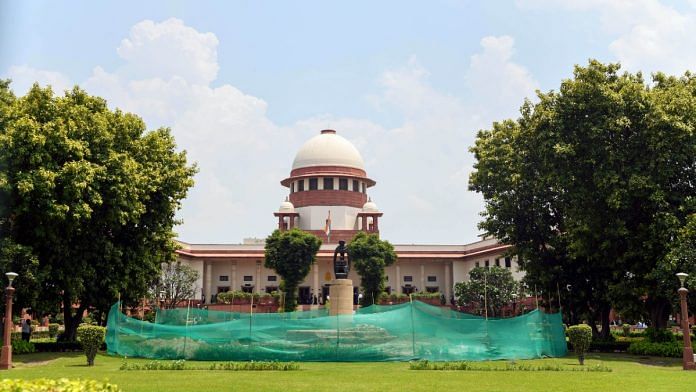New Delhi: Appointments to the Supreme Court (SC) have represented the religious diversity of India, but there has been little caste and gender diversity in the top court, according to a new study whose findings are being presented in a book titled Court on Trial.
The book presents a data-driven account of the Supreme Court of India, and proposes a practical agenda for reform. It has been authored by Aparna Chandra, associate professor of law at National Law School of India University in Bengaluru, Sital Kalantry, professor of law and associate dean at Seattle University School of Law, and William H.J. Hubbard, professor of law at University of Chicago Law School.
For their study, the authors collected the biographical characteristics of every judge appointed to the Supreme Court since its creation in 1950, until March 2018. They examined characteristics such as age at appointment, number of years as member of the bar, gender, caste and job that was held prior to appointment.
The book further divides its findings to look at representation within the Supreme Court before and after the Collegium system of appointment of judges was put in place by the judiciary in 1993.
Prior to the Collegium system, India had an executive-led appointments system for courts, in which the government had primacy in choosing judges, and the judiciary only had a consultative role in the process.
The book notes that there has been “very little caste diversity” in the apex court under both the executive-led system and the collegium system.
It states that as of 2018, only three judges appointed by the executive and only one judge appointed by the Collegium were from the Scheduled Castes or Scheduled Tribes of India.
It acknowledges that the Collegium appointed two members from a Scheduled Caste to the SC in 2019 (Justice Bhushan R. Gavai) and 2021 (Justice C.T. Ravikumar).
The book also states that the Collegium’s appointment of female judges was “similarly problematic”.
“Only seven out of 116 judges appointed to the court by the collegium as of May 2019 have been women, and only three new female judges (Justices Hima Kohli, B.V. Nagarathna and Bela Trivedi) have been appointed since 2019. To date, only 11 of the 266 judges who have served (or are currently serving) on the Supreme Court have been women. Only about 4 per cent of all judges sitting on the court have been female,” it points out.
Also Read: Justice Nagarathna says appointing women to senior judicial posts can break gender stereotypes
‘Represents religious diversity’
According to the book’s authors, the total number of executive-led system and Collegium-appointed judges is “largely in proportion to the religious diversity of India”.
“In terms of religious diversity, 79 per cent of executive-appointed judges were Hindu and 84 percent of collegium-appointed judges were Hindu. According to the last Census, approximately 80 per cent of Indians are Hindu. Thus, judges of the Supreme Court since its inception have been fairly and proportionally representative of the religious diversity of India,” it explains.
Highlighting a lack of gender and caste diversity, it observes: “It appears that the Collegium has a notion of diversity that focuses on only regional and religious diversity. However, the Collegium has not kept pace with new notions of diversity supported by the political branches, namely gender and caste diversity.”
It relies on previous research to point out that the high courts also do not reflect India’s caste and gender diversity.
It notes that the Collegium selects judges for the SC from the pool of high court chief justices. It then asserts that if the Collegium intends on primarily drawing from the pool of high court chief justices, then it should appoint women to the position of high court chief justices at a very high rate to make a dent in the lack of gender diversity in the top court.
The book further suggests that as long as the Collegium system is in place, the Collegium should consider altering the appointments process to make the apex court “reflect a broader notion of diversity”.
“The Collegium members could appoint more women and caste minorities to high courts with an eye to ensuring that they will eventually be senior enough to be chief justices of high courts and therefore, be stronger candidates for appointment to the Supreme Court,” it states.
(Edited by Nida Fatima Siddiqui)
Also Read: US Supreme Court has put an end to ‘positive discrimination’. India could take a cue



